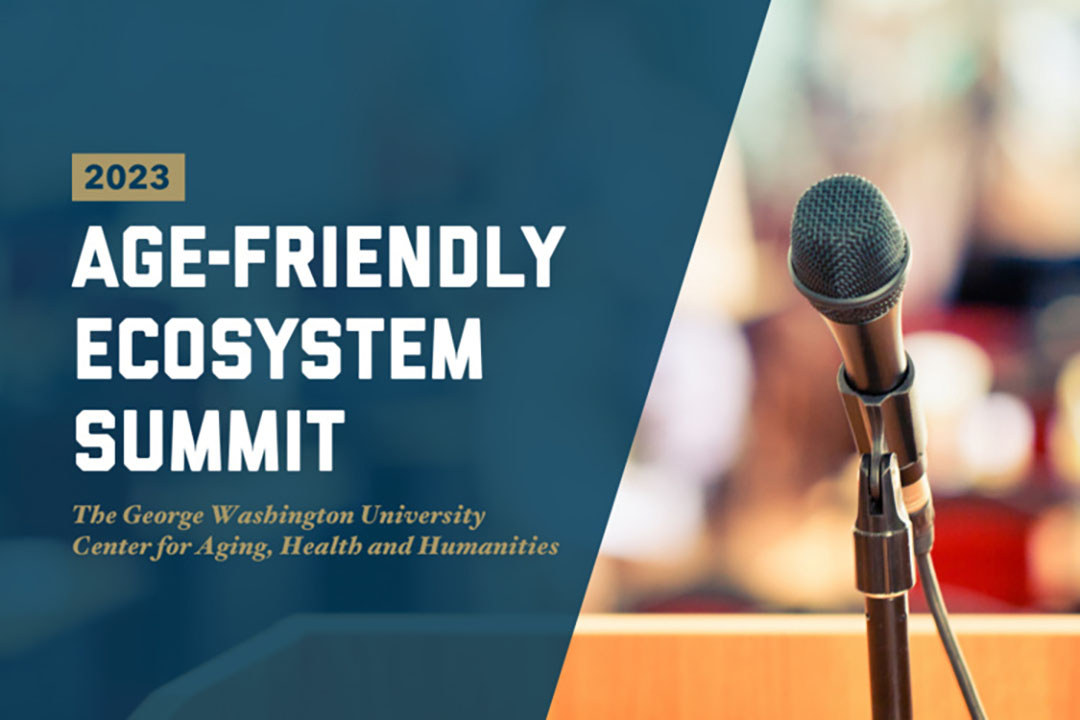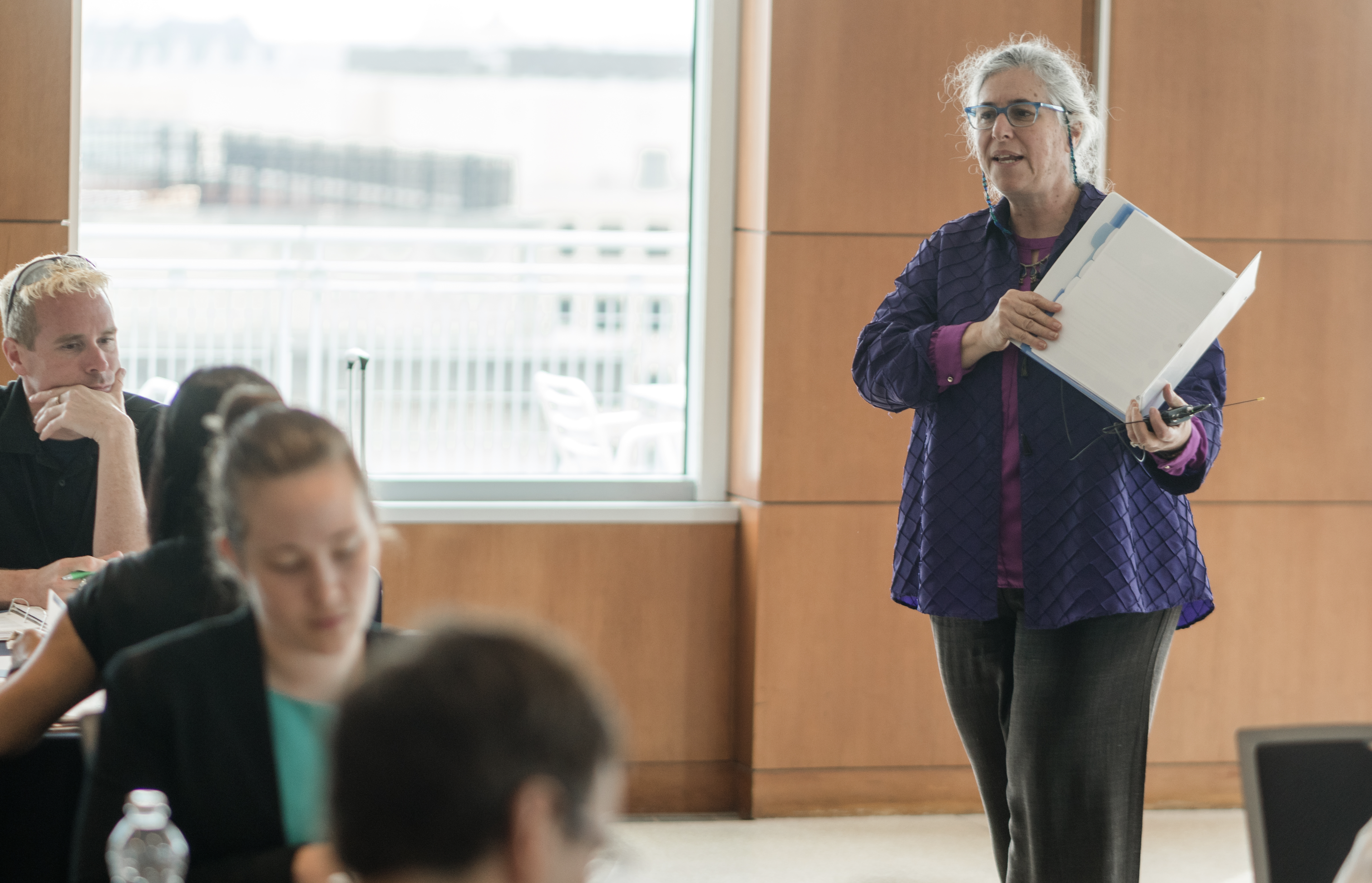The third annual Age-Friendly Ecosystem Summit will take place virtually Sept. 26-27 and Oct. 3-4.
Hosted by the George Washington University’s Center for Aging, Health and Humanities (CAHH), this year’s event will feature four topics: ageism, inclusivity, communications and creativity.
“We want to change the narrative about aging into a positive one,” said CAHH Director Melissa Batchelor, who is also an associate professor in GW Nursing. “When we have negative beliefs about aging, research shows that it can decrease your life span by seven years. Most people don’t recognize how harmful it is.”
The summit is a regional event with partners Age-Friendly Alexandria, Arlington, Virginia, the District of Columbia, Howard and Montgomery counties in Maryland, Hyattsville, Maryland, and the Georgetown University Aging and Health Program.
Age-friendly cities are an internationally recognized concept, with support from the World Health Organization. There are eight domains of age-friendly cities: housing and neighborhoods; outdoor spaces and buildings; transportation and walkability; arts, entertainment and leisure; respect and social inclusion; civic participation and employment; communication and information; and health and wellness.
At the 2023 Age-Friendly Ecosystem Summit, each session will feature a keynote speaker at the national level, followed by a regional exemplar and then examples at the local community level. The sessions will take place from 1 p.m. to 3 p.m.
Ageism
The ageism session on Sept. 26 aims to point out what ageism is, how to recognize it, and how to change the narrative. The goal is to raise awareness and offer strategies to combat ageism. The keynote speaker will be the activist Ashton Applewhite, who is the author of the book “This Chair Rocks.”
Age-friendly communities must address negative beliefs about aging and ageist elements in the environment to enable individuals of all ages to pursue their goals.
“Ageism is harmful and impacts our health. It’s still the only -ism that’s socially accepted,” said Batchelor, who pointed out that there are many examples in daily life.
“I was getting my nails done the other day, and this guy came in to check on his mother, and he said, ‘Well, she’s old and slow.’ Those are ageist statements—and if he was saying something racist or sexist, everyone would have been very upset,” Batchelor said.
“Society imposes ageist beliefs on people. That’s why we want to get people to think about, recognize ageism, and call it out. That’s the only way we’re going to have change.”
Inclusivity
The session on inclusivity will take place Sept. 27. Participants will learn how to engage diverse, intergenerational populations to improve equitable access to age-friendly services.
“We want to raise issues specific to people with disabilities, the transgender population, how to create equity in long-term care, uplifting Latino voices, and creating inclusive neighborhoods for people of all ages, abilities and income levels,” Batchelor said.
One of the speakers will be Ames Simmons of GW’s LGBT Health Policy and Practice Program, who will discuss resources for transgender aging.
Communication
In age-friendly communities, learning how to communicate information about resources and opportunities to a diverse population in a clear manner is essential.
The session on Oct.3 will teach effective communication strategies for various forms of media.
Hannah Albers, program director of the National Center to Reframe Aging, will deliver the keynote speech on the use of images and language.
“A 40 year old and an 80 year old could be very different in how they obtain information,” Batchelor said. “So, how do we help organizations and communities get info about products and services available in the community out to all people who are older?”
Information can come in the form of something tactile, such as newspapers and magazines, or virtual, such as the internet and social media.
“We want to help businesses and organizations make sure their communication isn’t inadvertently ageist content and to share best practices for communications that are age-friendly,” Batchelor said.
The session will also cover the use of images related to aging, whether they’re positive or negative.
Aging-related terminology will be part of the session, including best practices for naming programs and services in an age-friendly way.
“Most people don’t like the word ‘seniors’ or ‘the elderly,’ plus, they can be ageist terms,” Batchelor said.
Creativity
On Oct. 4, the focus will be on creativity, which includes the artistic disciplines of the visual arts, literature, dance and music. Participants will learn about the positive health and social effects of creative programming for all ages.
Pam Saunders and Caroline Edasis will kick off the session with a cross-industry report on “The Next Wave in Creative Aging.”
There will be a spotlight on multiple creative arts programs that support longevity and well-being, such as singing groups and dance troupes.
Gene Cohen, the founding director of the GW Center for Aging, did the first study looking at the impact of arts and humanities on aging well, according to Batchelor.
“There’s the social aspect of leaving your house and going to a place to meet with other people. It improves function and cognition—joining a singing group or a dance group,” Batchelor said.
You can register for any session of the Age-Friendly Ecosystem Summit on the GW Nursing events calendar. “It’s going to be a great dialogue and conversation to move the world towards being more age-friendly,” said Batchelor, “because when things are age-friendly, they are friendly for everyone!”



